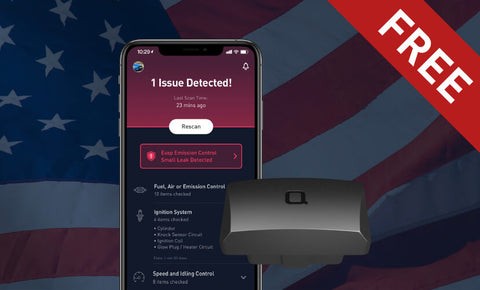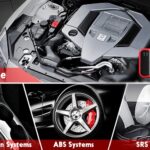Whether you’re a seasoned auto mechanic or a car owner keen on understanding your vehicle’s health, grasping the concept of an OBD2 drive cycle is essential. This process is particularly valuable when you’re conducting a car diagnostic test using an OBD2 scanner. Understanding and performing a drive cycle can provide critical insights into the effectiveness of recent repairs and the overall condition of your vehicle’s engine and emission systems.
Decoding the OBD2 Drive Cycle
In simple terms, an OBD2 drive cycle is a standardized series of driving conditions that allows your vehicle’s onboard computer, known as the Powertrain Control Module (PCM), to execute self-diagnostic tests. This cycle is crucial for verifying repairs and ensuring all emission systems are functioning correctly. The PCM continuously monitors various sensors and systems in your car. When you clear OBD2 error codes, the drive cycle prompts the PCM to re-run these diagnostic checks. This process helps to confirm whether the issue has been resolved or if further attention is needed, often indicated by the check engine light and associated OBD2 codes.
Step-by-Step Guide: Performing an OBD2 Drive Cycle
Executing a drive cycle is straightforward, but it requires careful preparation and adherence to specific steps. While the exact procedure can differ slightly depending on your vehicle’s manufacturer, model, and year, consulting your owner’s manual is always recommended for vehicle-specific instructions.
Here are ten general steps to follow for a basic OBD2 drive cycle:
- Clear Existing OBD II Error Codes: Begin by using your OBD2 scanner to clear all existing error codes. The drive cycle cannot initiate properly if there are pre-existing codes.
- Fuel Level: Ensure your fuel tank is between 30% and 70% full. This fuel range is generally required for the diagnostic tests to run accurately.
- Battery and Alternator Health: Verify the condition of your battery and alternator. A healthy electrical system is crucial as jump-starting the vehicle during the drive cycle is not permissible.
- Cold Start Period: Allow your vehicle to sit undisturbed for at least eight hours. During this time, avoid any interaction with the vehicle, including unlocking doors or inserting the key into the ignition. This ensures a cold start for the drive cycle.
- Initial Idle: Start your car and let it idle in Park or Neutral for two to three minutes. This allows the engine to reach a stable idle state.
Alt text: Car dashboard showing engine idling during OBD2 drive cycle preparation.
- Activate Accessories: Turn on your headlights, heater, and defrosters for a minimum of two minutes. This step engages additional electrical loads on the engine.
- Low Speed Driving: Drive to an area where you can safely reach 25 mph. Make complete stops at all stop signs or traffic lights. Gradually increase your speed to 35 mph, then to 45 mph, maintaining smooth acceleration and deceleration.
- Highway Driving: Find a freeway on-ramp and accelerate normally to merge with highway traffic. Stay in the slow lane and steadily increase your speed to between 55 mph and 60 mph. Engage cruise control and maintain this speed for at least five miles. This step is crucial for testing emission control systems at higher speeds.
Alt text: Car driving on a freeway to perform the highway speed phase of an OBD2 drive cycle.
- Deceleration Phase: Locate a sufficiently long exit ramp and allow your vehicle to coast down the ramp, naturally decreasing speed. Use your brakes at the end of the ramp if necessary. This tests the deceleration and fuel cut-off systems.
- Repeat Stop-and-Go Driving and Final Idle: Repeat step seven, returning to your starting point or mechanic. Once there, park your vehicle and let it idle for another one to two minutes. This final idle period allows the PCM to complete its post-driving diagnostics.
Interpreting OBD2 Scans Post Drive Cycle
After completing the drive cycle, you or your mechanic can perform an OBD2 scan to assess your vehicle’s condition. This scan will reveal if the repairs were successful and if your vehicle is now ready for an emissions test. The drive cycle essentially simulates typical driving conditions, allowing the engine’s computer to run a comprehensive series of tests to ensure all systems are operating within acceptable parameters. It’s also vital for confirming which specific issue triggered a code before repairs were made, and whether the chosen fix has effectively resolved the problem.
Drive Cycle Duration: What to Expect
While the preparation phase, including the cold soak period, requires eight hours, the active OBD2 drive cycle test itself is relatively short. The entire driving portion typically takes about 20 minutes, with a total completion time of around 30 minutes including idling periods. Investing this time in performing a drive cycle offers significant benefits in understanding your vehicle’s health and ensuring its longevity and smooth operation. Regular vehicle check-ups and prompt attention to dashboard notifications are essential for preventative maintenance and can save you money and hassle in the long run.
Handling New OBD2 Codes After a Drive Cycle
It’s possible that after completing a drive cycle and resuming normal driving, the check engine light might reappear, indicating a new OBD2 code. This doesn’t necessarily mean the initial repair failed, but rather that another issue may have been detected. In such cases, tools like nonda’s Smart Vehicle Health Monitor, paired with the ZUS app, can be invaluable. These tools allow you to monitor your vehicle’s health in real-time, read OBD2 codes, and even access guided video tutorials on DIY fixes. This proactive approach can potentially save you significant expenses on professional mechanic fees and ensure your vehicle remains in optimal condition.
Start your DIY diagnostics for free and gain deeper insights into your vehicle’s health with an OBD2 scanner. Explore resources on how to perform a DIY car diagnostic test and discover code readers from nonda, offering both a free device and app to get you started.
 nonda OBD2 scanner product banner
nonda OBD2 scanner product banner
